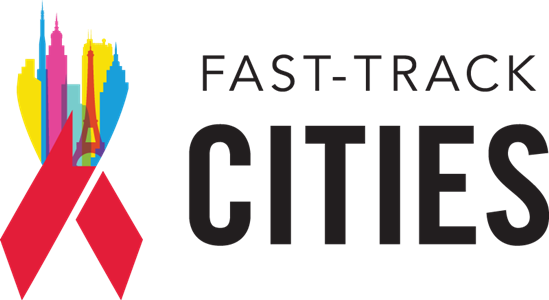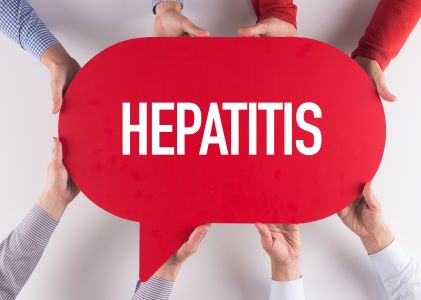Inside This Issue: News from Fast-Track cities and USCA conferences, progress toward national hepatitis goals, HIV research funding, and educational resources.

Conference News
Five Years In: Fast-Track Cities Come Together in London
Over 700 delegates from cities around the globe gathered in London, U.K., on September 8 through 11 for the first Fast-Track cities conference. The meeting focused on the efforts and progress made by participating cities toward ending the HIV/AIDS epidemic, as well as the challenges and lessons learned over the past five years. The Fast-Track cities initiative was launched in Paris, France, on World AIDS Day 2014, with 26 participating cities. Since that time, the initiative has grown to include more than 300 cities and municipalities worldwide.
Fast-Track cities have officially made the commitment to attain the UNAIDS 90-90-90 targets by 2020: 90% of all people living with HIV will know their HIV status; 90% of all people with diagnosed HIV infection will receive sustained antiretroviral therapy (ART); and 90% of all HIV-diagnosed people who receive sustained ART will achieve viral suppression. A fourth key goal of the initiative is to achieve zero HIV stigma and discrimination. For 2030, the targets are still higher: 95% of all people living with HIV knowing their status; 95% of all diagnosed people receiving sustained ART; and 95% of all people treated with sustained ART achieving viral suppression.
London has now met both the 2020 and 2030 targets, with recent figures confirming that 95% of all people living with HIV in the city know their status, 98% of those are on treatment, and 97% of people on treatment have suppressed viral loads. Speaking at the conference, the mayor of London, Sadiq Khan, advocated for making pre-exposure prophylaxis (PrEP) widely available: “No ifs, no buts, PrEP needs to be made available to everyone . . . it works.”
In addition to London and Amsterdam, Netherlands, which were the first two cities to reach the 90–90–90 target, two other cities in the United Kingdom, Manchester and Brighton and Hove, have also achieved the 90–90–90 targets. In an analysis of data from 61 cities, researchers reported that 14 cities have surpassed the first 90 (knowing HIV status), another 16 cities have surpassed the second 90 (receiving sustained ART), and 23 cities have surpassed the third 90 (achieving viral suppression).
Representatives from different Fast-Track cities described how innovating and creating a supportive environment can increase the scale-up of services. For example, in Melbourne, Australia, the HIV/AIDS response began early with bipartisan political support at all levels of government that fostered cooperation between political, community, and scientific leaders. Melbourne’s coordinated response has led to the virtual elimination of mother-to-child transmission of HIV and transmission among sex workers. The city of Nairobi, Kenya, has reached ART coverage levels of close to 100% among people who have been diagnosed with HIV. The city credits this milestone to better data gathering, which helped to identify the needs of key at-risk populations and young people living in informal settlements.
Highlights of the 2019 U.S. Conference on AIDS
Thousands of HIV advocates and community leaders participated in the 2019 U.S. Conference on AIDS (USCA), which was convened by NMAC and held in Washington, D.C., from September 5 through 8. The event featured more than 160 workshops in about 25 different topic areas, including HIV prevention, access to care, policy, and the impact of HIV on specific at-risk population groups. A major focus of this year’s conference was the U.S. Department of Health and Human Services (HHS) proposed initiative “Ending the HIV Epidemic: A Plan for America,” which has the goal of ending the HIV epidemic in the U.S. within 10 years.
HHS’s HIV.gov website has provided extensive coverage of the 2019 USCA through blog postings and videos, including the following:
- Video Conversations from the 2019 U.S. Conference on AIDS This Week
- Conversations from USCA: “Gathering of the 57 Jurisdictions” Developing Ending the HIV Epidemic Plans
- More Conversations from USCA: HHS HIV Leaders Discuss Ending the HIV Epidemic: A Plan for America
- HHS’s Corinna Dan Shares Highlights from Viral Hepatitis Presentation from USCA
- Conversation from USCA: CDC’s Eugene McCray and HRSA’s Laura Cheever on Ending the HIV Epidemic
- HRSA Pathway on Ending the HIV Epidemic at USCA 2019
The HIV magazine Poz has also compiled a USCA webpage that features a 7-minute video and a series of tweets recapping selected research and community activities at the conference.

Viral Hepatitis
Hepatitis Report Documents Successes and Shortfalls in Progress Toward 2020 Goals
CDC’s 2019 National Viral Hepatitis Progress Report provides an update on efforts to prevent viral hepatitis infections and eliminate disease and deaths caused by viral hepatitis. The report focuses on seven indicators that CDC uses to assess the nation’s progress toward reaching the following goals by 2020:
- Increase to 85% the proportion of children aged 19 to 35 months who have received at least two doses of hepatitis A virus (HAV) vaccine;
- Reduce the rate of reported HAV infections to 0.30 per 100,000 U.S. population;
- Increase to 85% the proportion of infants who receive hepatitis B virus (HBV) vaccine within 3 days of birth;
- Reduce the rate of reported acute HBV infections among persons 19 years or older to 0.5 per 100,000 population;
- Reduce the rate of HBV-related deaths to 0.48 per 100,000 population;
- Reduce the rate of reported acute hepatitis C virus (HCV) infections among persons 19 years or older to 0.5 per 100,000 population; and
- Reduce the rate of HCV-related deaths to 4.17 per 100,000 population.
The 2019 report – which documents progress through 2017 – shows that the U.S. has made significant progress in reducing HBV- and HCV-related deaths – more than meeting both the annual target for 2017 and the 2020 goal. For another goal – increasing the percentage of infants who receive HBV vaccine within 3 days after birth – progress is being made, but not quickly enough to reach the annual 2017 target.
Unfortunately, for the remaining four indicators, the 2017 annual targets were not met, and there was either no significant improvement or an actual worsening – moving away from the targets. “Progress is not being made in reducing the incidence of acute hepatitis B among adults, and incidence increased slightly from 2016 to 2017,” according to CDC.
“Of great concern are the ongoing and apparent large increases in the incidence of reported acute hepatitis C. The lack of a hepatitis C vaccine and increases in injection-drug use related to the nation’s opioid crisis have contributed to these increases in acute hepatitis C. Efforts to curb hepatitis C virus (HCV) transmission and identify all new (acute) and existing (chronic) infections must continue, especially since well-tolerated, short-course treatments are available that can cure almost all HCV-infected persons.”
.jpg)
HIV Research Funding
NIH Funds HIV Implementation Research in Areas with High HIV Rates
This month, the National Institutes of Health (NIH) announced HIV Implementation awards totaling approximately $11.3 million to 23 institutions across the U.S. The awards support these institutions’ collaborative efforts with community partners to develop tailored local plans for preventing, diagnosing, and treating HIV in areas with high diagnosis rates. The awards are going to 17 institutions that participate in the NIH-funded Centers for AIDS Research (CFAR) program, and 6 AIDS Research Centers (ARCs). The 65 awards will fund research in 36 of the 48 U.S. counties and five of the seven states with a high rural HIV burden, as well as Washington, D.C., and Puerto Rico. The new research will investigate how to best deliver evidence-based interventions and services in these areas, with particular emphasis on populations with a disproportionate risk of HIV, including Black and Latinx women and men, transgender women, and young people 13 to 24 years old.
“With existing, powerful HIV treatment and prevention tools, we can end the epidemic in the U.S.,” noted Anthony Fauci, director of NIH’s National Institute of Allergy and Infectious Diseases. “The new initiative [HHS’s proposed ‘Ending the HIV Epidemic’ plan] is a practical, achievable implementation plan. By working directly with health departments and other community organizations, researchers can find the best ways to use the highly effective methods at our disposal to diagnose, prevent and treat HIV in the United States.”
%20small.jpeg)
Guidelines
Updates to Opportunistic Infection and Pediatric HIV Treatment Guidelines
HHS has recently updated the histoplasmosis and varicella-zoster virus (VZV) sections of its Guidelines for the Prevention and Treatment of Opportunistic Infections in Adults and Adolescents with HIV (OI guidelines) and the treatment recommendations in its Guidelines for the Use of Antiretroviral Agents in Pediatric HIV Infection (pediatric HIV treatment guidelines).
The OI guidelines include new recommendations for primary and secondary prophylaxis of histoplasmosis, as well as detailed guidance on using the drugs voriconazole and posaconazole to treat histoplasmosis in patients who cannot tolerate the antifungal drug itraconazole.
The VZV disease section of the OI guidelines includes recommendations on the use of two available vaccines (recombinant zoster vaccine [RZV, Shingrix] and zoster vaccine live [ZVL, Zostavax]) to prevent herpes zoster (shingles) in persons with HIV aged 50 years and older. More extensive guidance is also provided on the treatment of ocular complications of VZV infection.
The revised sections of the pediatric HIV treatment guidelines provide updated content and recommendations about the use of dolutegravir and the fixed-dose combination tablet Biktarvy (bictegravir/emtricitabine/tenofovir alafenamide) for treating children and adolescents with HIV.
%20-%20Stylized%20book%20with%20computer%20cursor%20without%20the%20words.jpg)
Educational Resources
Two New CME/CE-Certified E-Learning Courses Now Available from AIDSinfo
HHS’s AIDSinfo recently released two HIV/AIDS e-learning courses intended for health care professionals:
AIDSinfo HIV/AIDS Guidelines – This course provides an overview of HIV-related medical practice guidelines available on the AIDSinfo website and mobile apps.
AIDSinfo Information Resources – This course summarizes other (non-guidelines) resources available on the AIDSinfo website and mobile apps, including information on HIV-related drugs, clinical trials, and patient education materials in English and Spanish.
People who complete the self-paced, interactive courses will be better able to identify and access AIDSinfo resources for themselves and their patients or clients. Course participants will also learn how to use AIDSinfo search functions to find desired information on HIV prevention, treatment, and research.
These free courses are available through the National Library of Medicine Learning Center and are eligible for continuing medical education/continuing education (CME/CE) credit.
New or Revised Fact Sheets from CDC and Kaiser
CDC and the Kaiser Family Foundation (KFF) have recently published several new or updated HIV-related fact sheets. These are:
HIV and Men – This heavily illustrated fact sheet provides CDC’s most recent data for new HIV diagnoses among men, with breakdowns by race/ethnicity and transmission category, as well as trends for the period 2010 through 2016. It also includes information about HIV-positive men’s knowledge of their HIV status, factors that increase some men’s risk for infection, and steps CDC is taking to address HIV infection among men.
HIV and Tuberculosis – This CDC fact sheet discusses the overlap between HIV and tuberculosis (TB), and the importance of TB testing for all persons living with HIV and treatment for those found to be infected with TB. The document also describes approaches for addressing the specific prevention and treatment challenges of HIV-TB coinfection.
HIV and Occupational Exposure – This fact sheet summarizes the risks of different types of occupational exposures to HIV and the steps that can be taken to prevent occupational transmission. According to CDC, only 58 cases of confirmed occupational HIV transmission have been recorded in the U.S., and just one of these has occurred since 1999.
The Global HIV/AIDS Epidemic – This illustrated fact sheet from KFF includes sections summarizing trends in global HIV incidence, prevalence, and deaths; regional trends in incidence and prevalence; affected/vulnerable population groups; HIV prevention and treatment; and the global response to HIV/AIDS, including efforts to end the epidemic by 2030.



